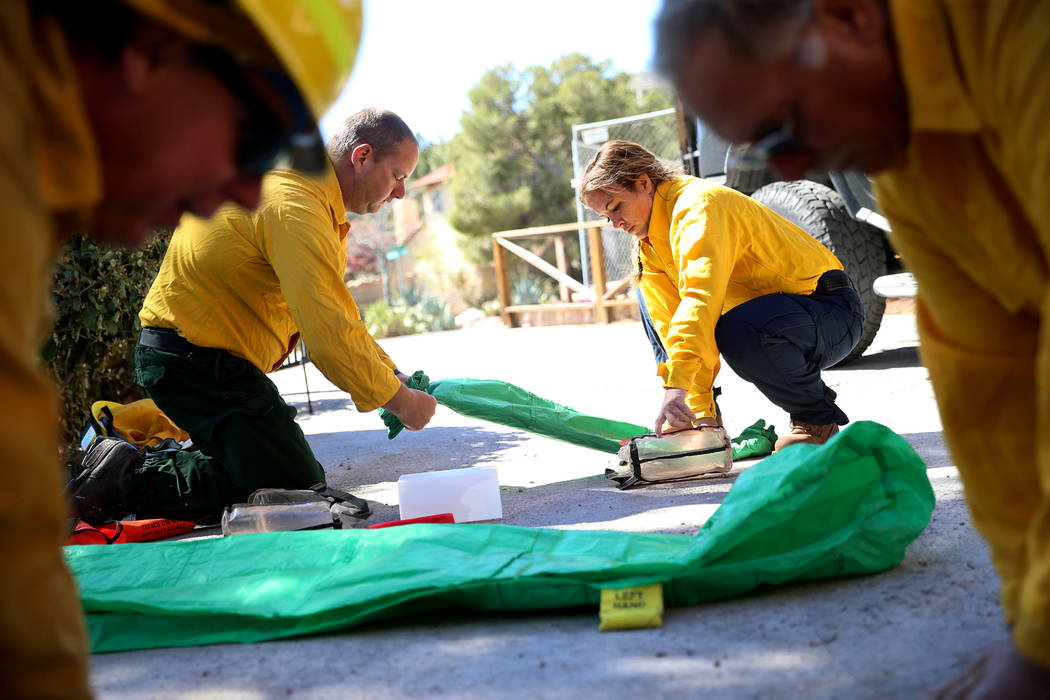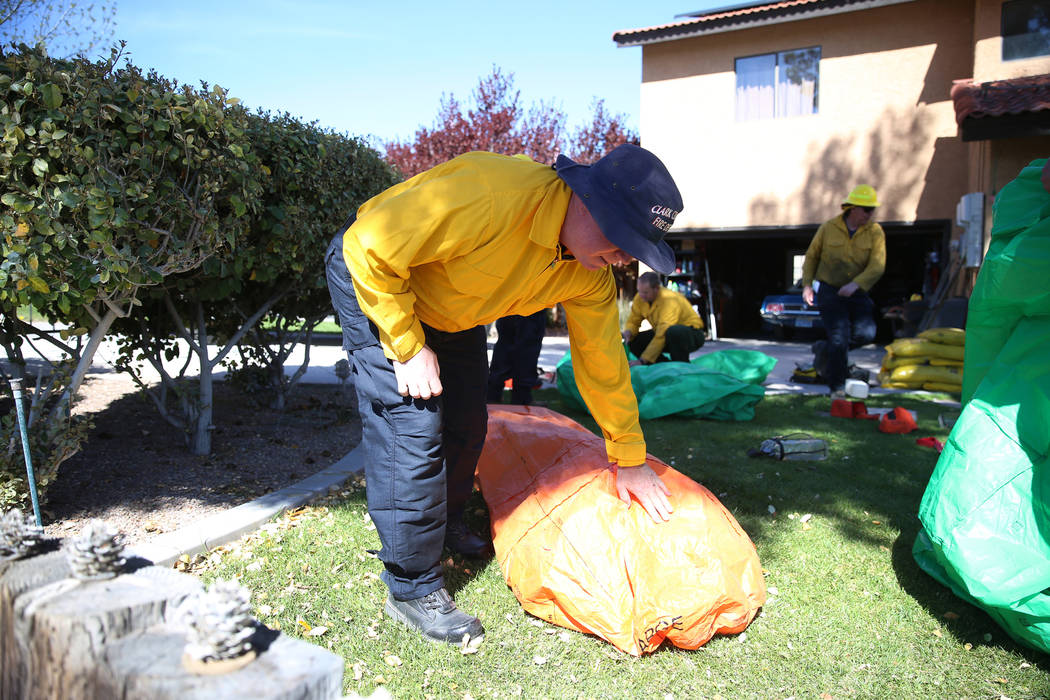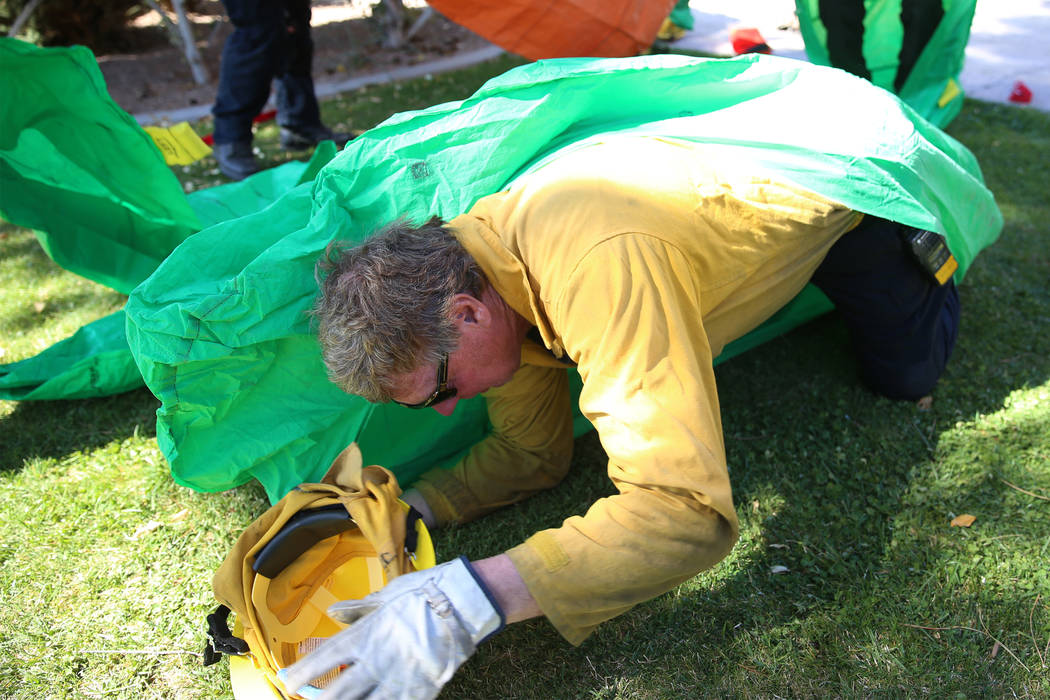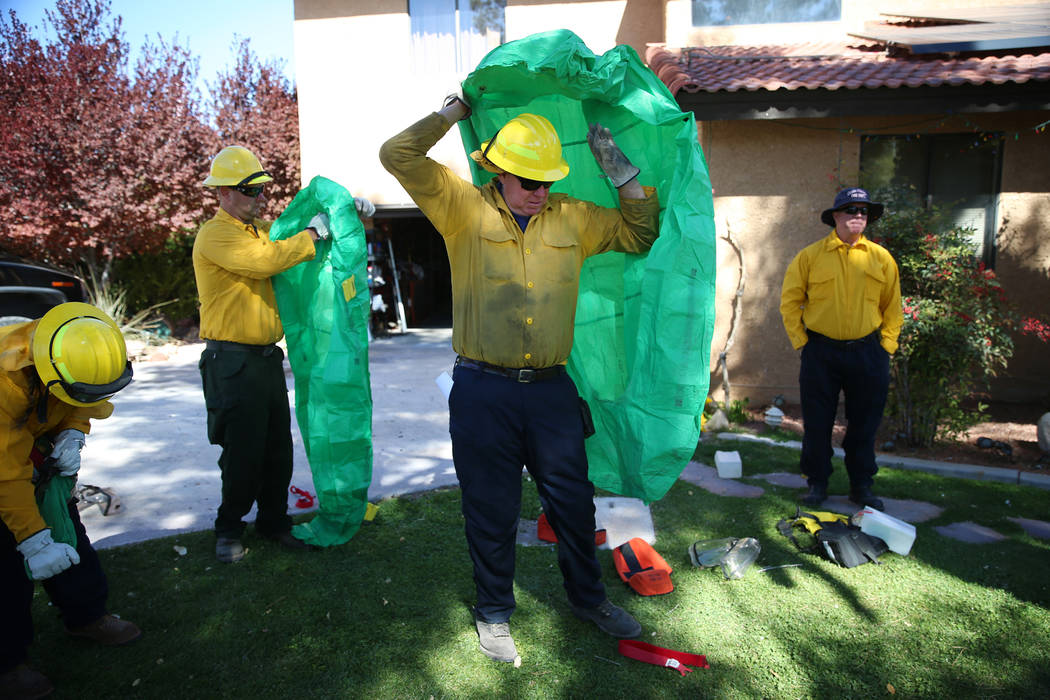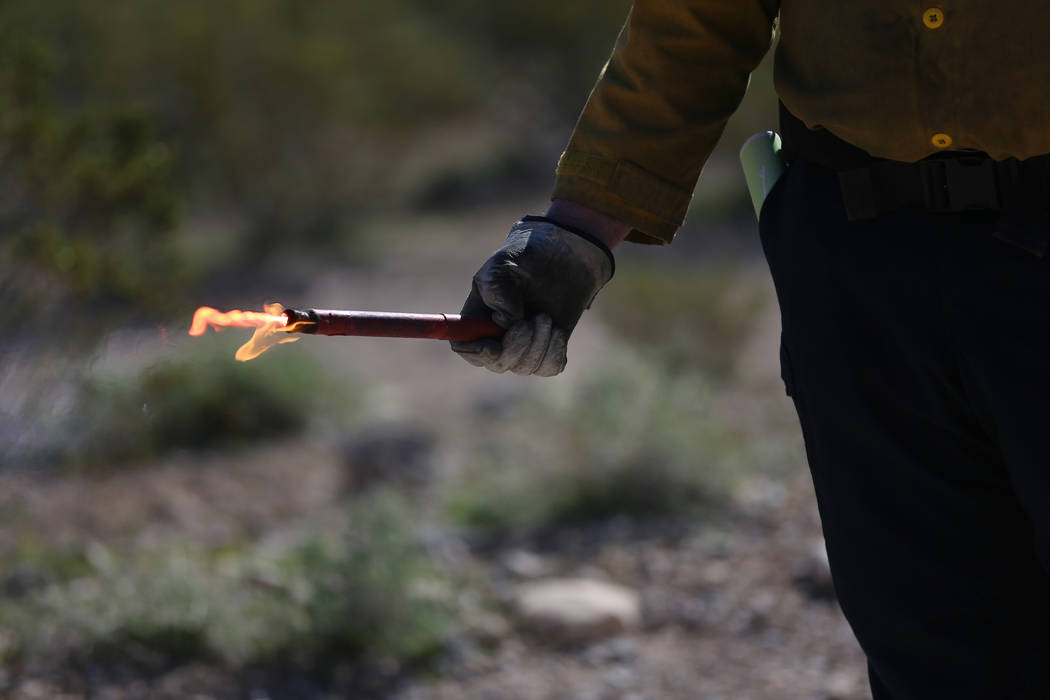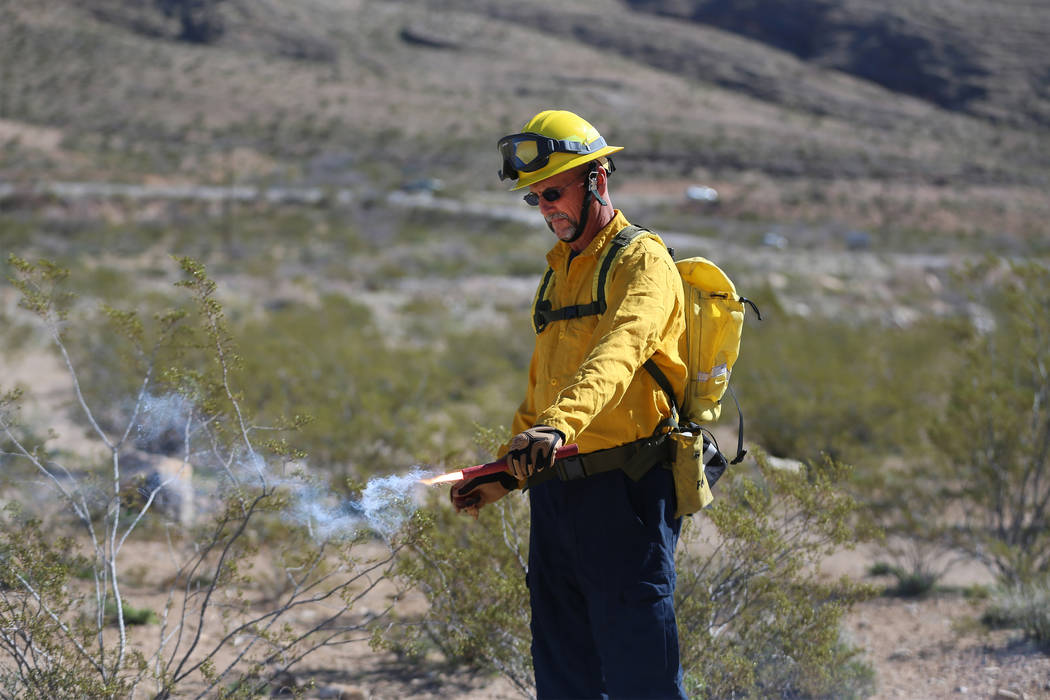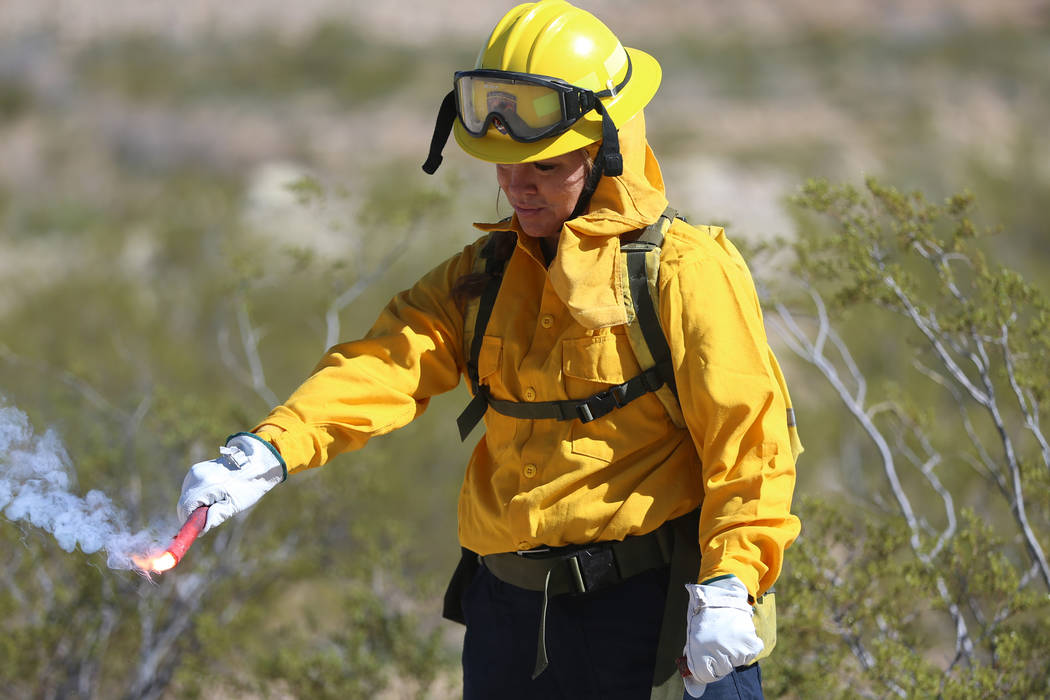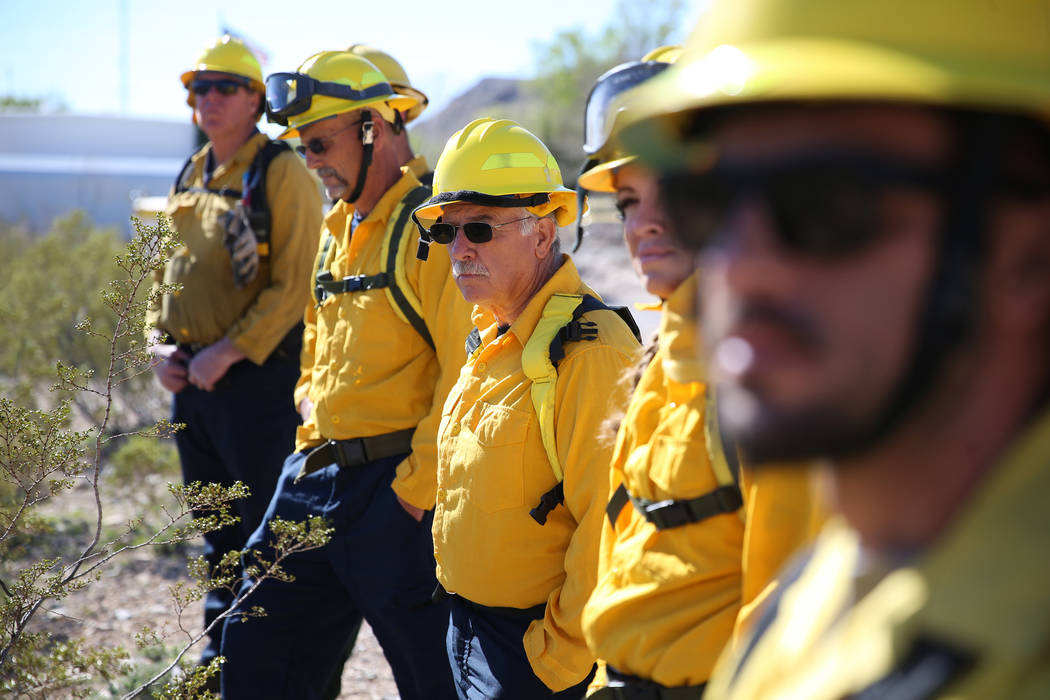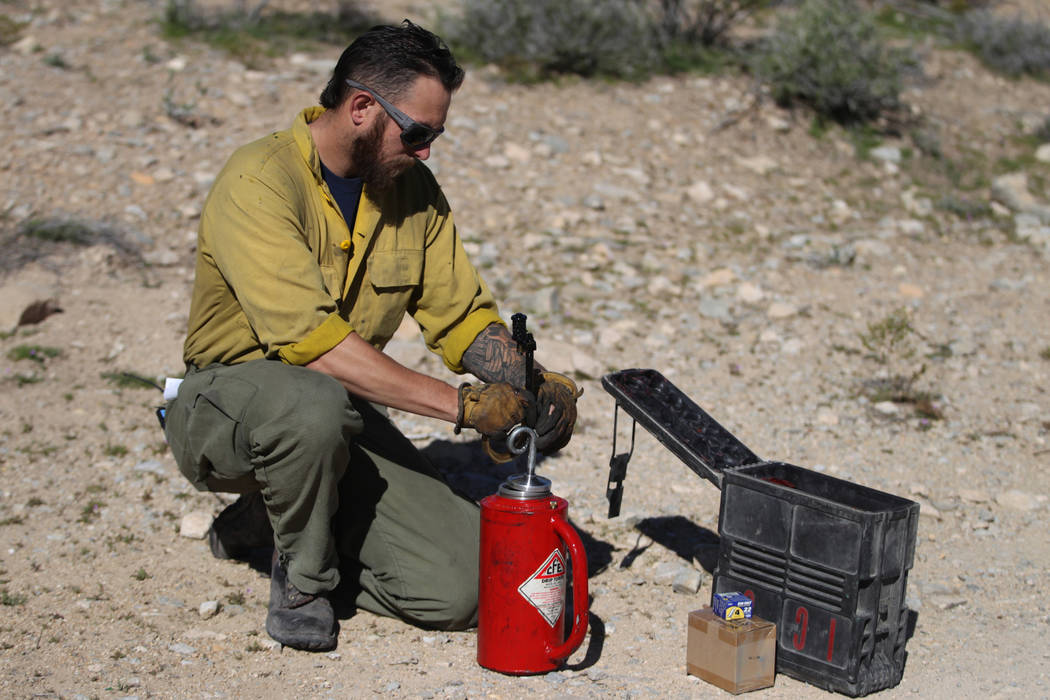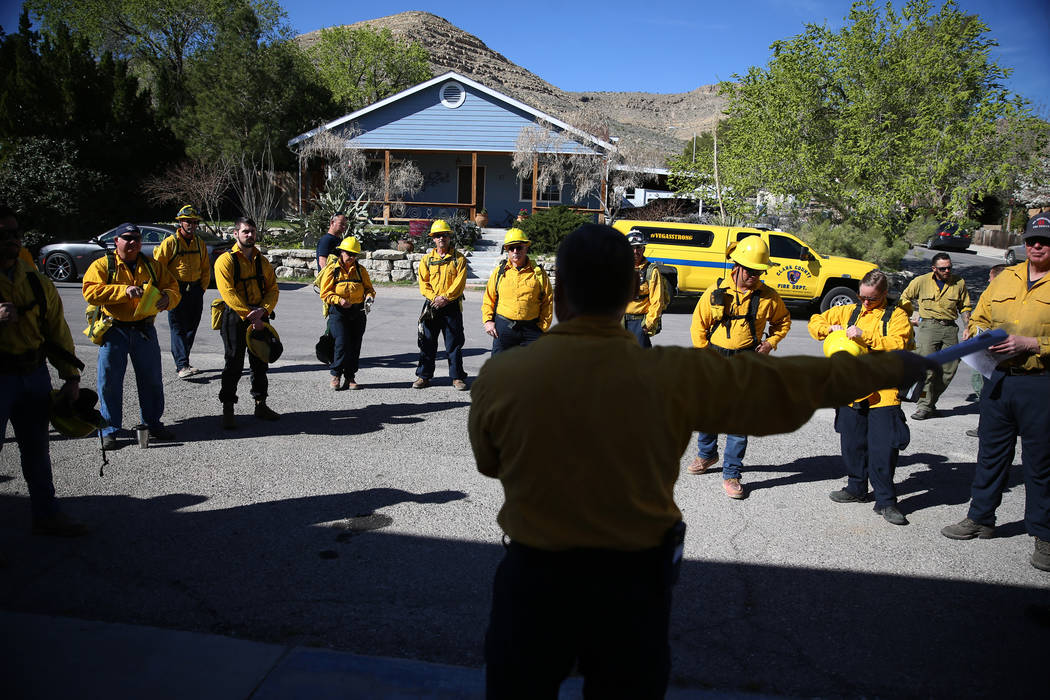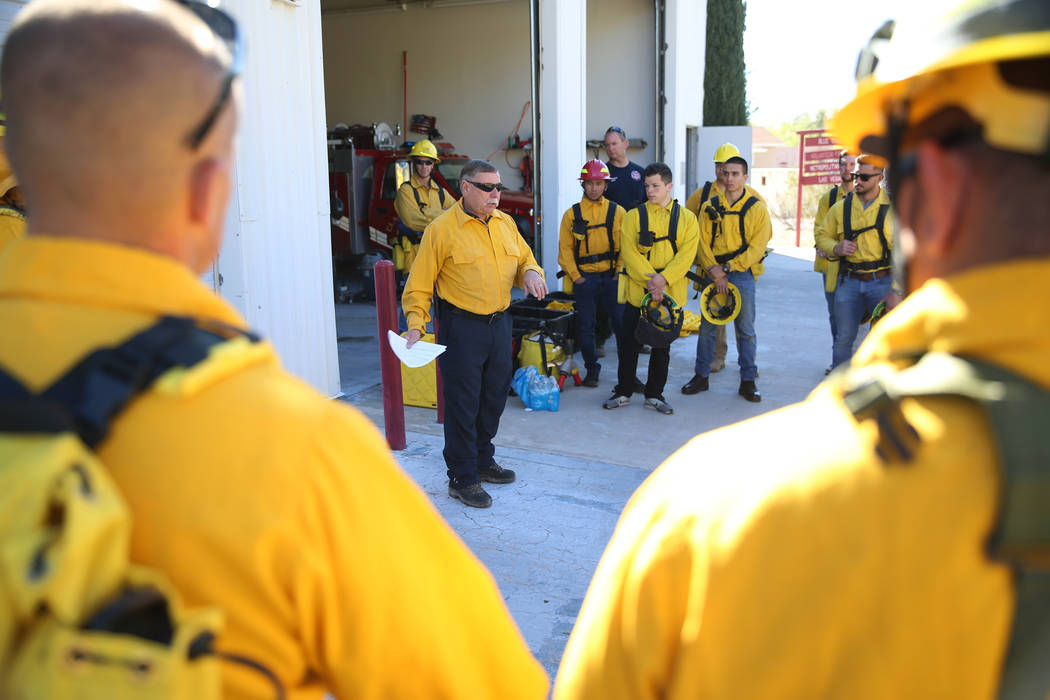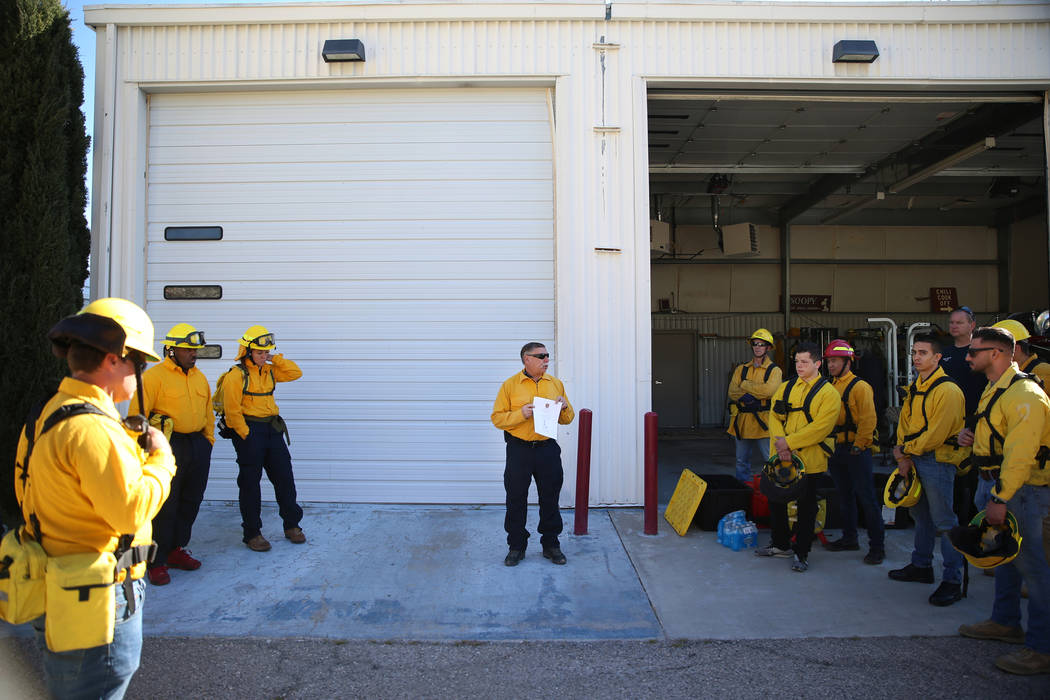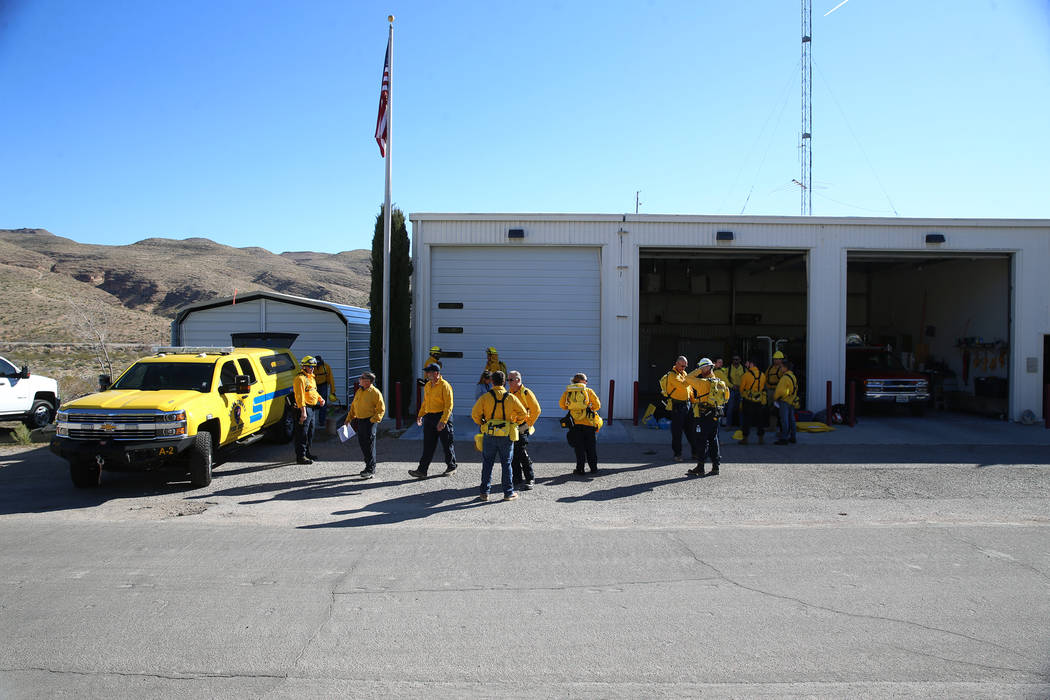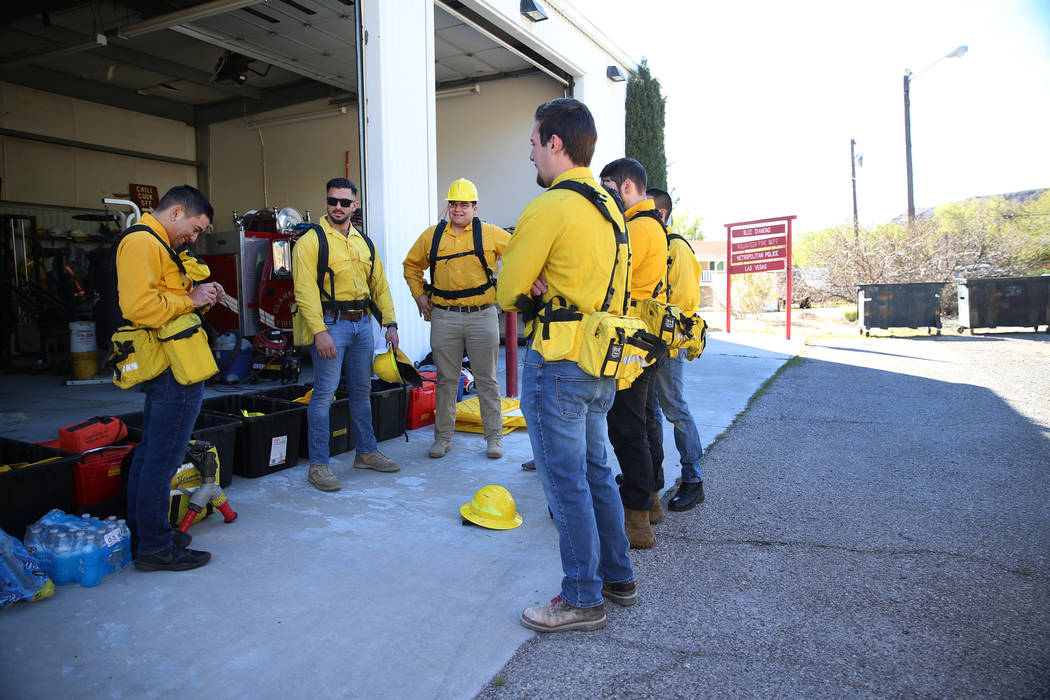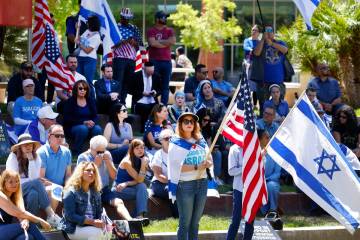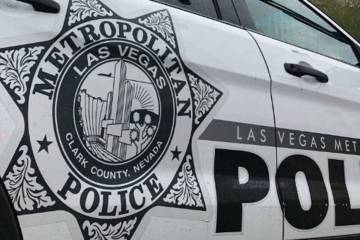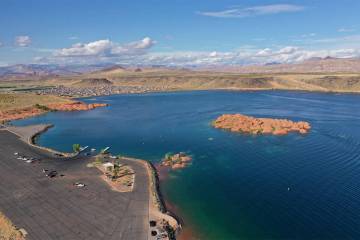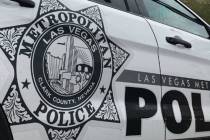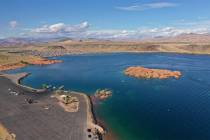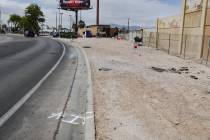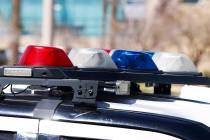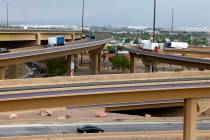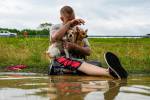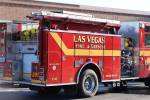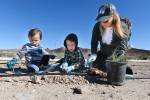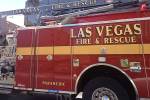Southern Nevada firefighters prepare for ‘bad’ wildfire season
This year could present one of the most challenging wildfire seasons in Southern Nevada in the last decade thanks to a wet spring, a Clark County fire official said.
“With all the rain we’ve had, this is going to be a bad year — probably the worst,” Assistant Fire Chief Larry Haydu said Saturday morning outside Fire Station 80 in Blue Diamond, a town on the edge of the Red Rock Canyon National Conservation Area. “The worst years were from 2008 and 2010, and this is sizing up to be every bit the same.”
The plants and weeds springing up from the rain can become fuel during Nevada’s wildfire season from May through October, when vegetation is the driest, Haydu said.
In preparation, about 30 volunteer firefighters from across the state attended a four-hour training session Saturday led by the Clark County Fire Department. The session was designed to prepare volunteers for the annual re-certification required to fight on the front lines of wildfires.
Saturday’s group included personnel from the Clark County Fire Department, Mount Charleston Fire Protection District and the Bureau of Land Management in addition to 10 College of Southern Nevada students.
The training was divided into seven educational stations, including weather and communication, which has a critical role in battling wildland fires; backfire lighting and line-cutting techniques used to clear areas to protect firefighters and threatened structures; shelter deployment in which volunteers are required to set up a foil shelter within 25 seconds; structure protection; and hand tools and equipment.
“What’s our mantra?” Haydu asked the volunteers before they broke off into groups.
“Be alert. Keep calm. Think clearly. Act decisively,” they responded.
At the backfire and line-cutting station, BLM firefighter Brian Holmes explained that, unlike structural fires, little water is typically used when battling wildland fires.
Instead, he said, firefighters will use tactics known as “line cutting” and “backfire lighting,” meaning crews will ignite fire on the ground in specific patterns to either consume the fuel in the wildfire’s path or change the blaze’s direction.
“Mainly it’s risk versus reward,” Holmes told the volunteers. “Sometimes we back off to a road where we have a better chance of stopping that fire. Where that adds 200 acres, we stop 2,000 acres. That’s the premise of why we light fire on the ground.”
Currently, 17 fire stations across Clark County are looking for volunteer firefighters to join the existing team of about 140 volunteers in Nevada, with about 50 of those holding wildfire certification.
At a minimum, Haydu said, volunteers must be certified as emergency medical technicians.
Anyone interested in becoming a volunteer can visit www.nvfirechf.org/volunteer for more information.
Contact Rio Lacanlale at rlacanlale@reviewjournal.com or 702-383-0381. Follow @riolacanlale on Twitter.
Wildfire prevention tips
— Clear dead vegetation around your home to limit potential fire fuel.
— Properly soak and dispose of cigarette butts, charcoal briquettes and any other materials that can start fires.
— Adhere to posted fire restrictions in National Park Service, U.S. Forest Service and U.S. Bureau of Land Management areas in Southern Nevada, including Red Rock Canyon, Mount Charleston and Lake Mead.
— Equip ATVs and similar vehicles with spark arrestors.
— Only fireworks labeled "Safe and Sane" sold by authorized dealers are legal for use in Clark County and only from July 1 until July 4 when fireworks are permitted under Clark County code. No fireworks, including the Safe and Sane ones, are allowed on public lands.
— Remember that roofs constructed from fire resistant materials such as tile, metal or asphalt can significantly increase the chances of the survival of your home, while wood shingle roofs are more burnable.
— If you are warned that a wildfire is threatening your area, listen to your battery-operated radio for reports and evacuation information. Follow the instructions of local officials.
— Source: Clark County Fire Department



